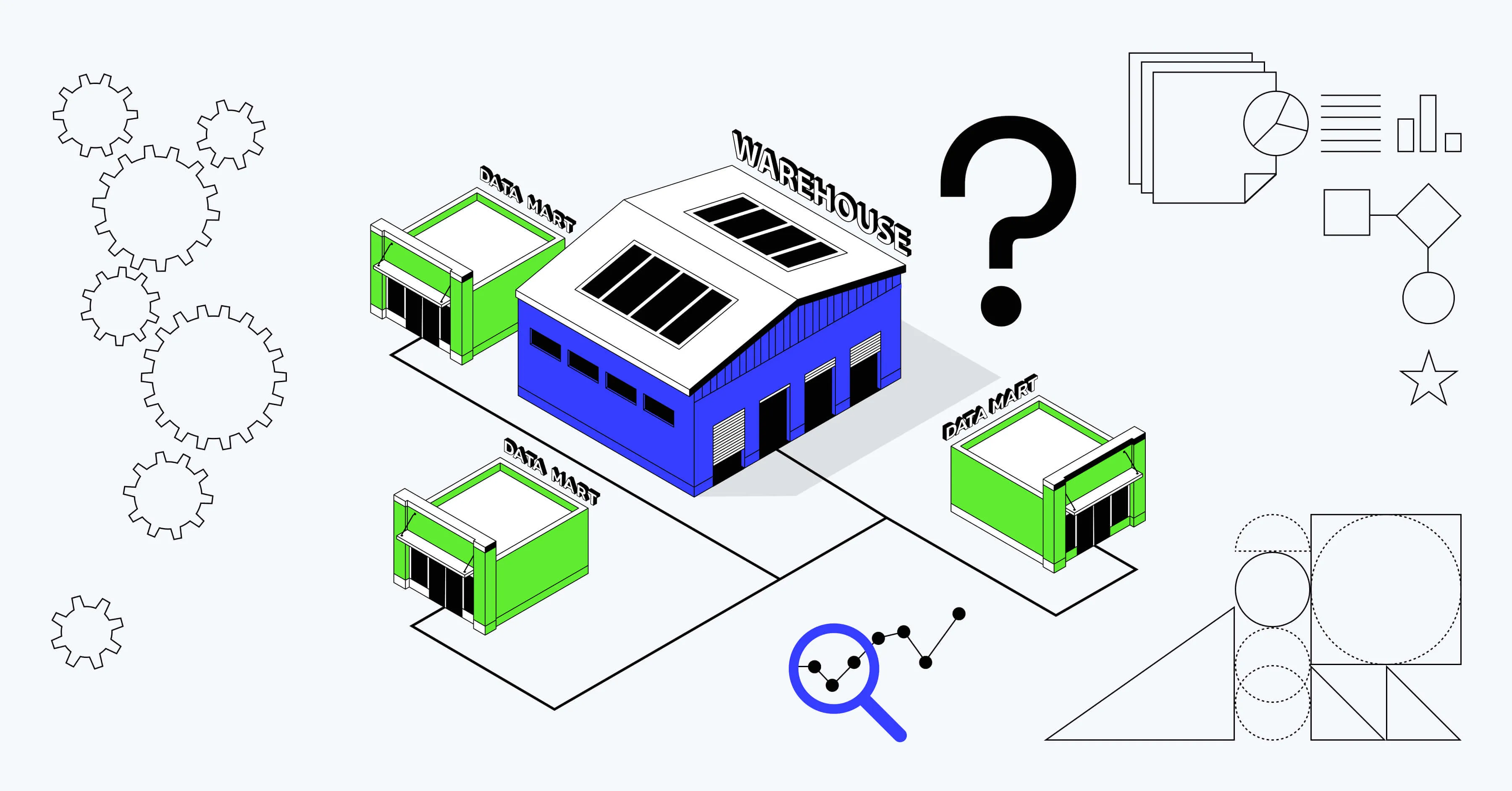Why do you have to build a data warehouse?


Share
Were you wondering what is a data warehouse, and why do people talk about it? Building something like that might sound complex but the reasons to do so might be too good to ignore. Learn more in this article!
What is a data warehouse?
A data warehouse (DWH) is the perfect data source you’ve always dreamed about. It contains all the data from every department in your company. All tables are structured and easy to connect to have a more comprehensive view. Everything in the cloud and data flows work automatically — the perfect dream for a data-driven company.
The first point you need to know is that all experts are using a data warehouse to do high-quality analytical work. In large organizations, the DWH is standard. In smaller companies, the implementation of a DWH and flexible data flow is less likely because it is quite expensive to maintain it. So, they are much more likely to use services like Google Analytics, Amplitude, Mixpanel, etc.
But these aren’t bad, we love them and use them too! They are often much faster and it is easier to check certain data or build simple reports. But for more complex work, a DWH is the best solution. The cost of implementing a DWH can be much lower if you use the following:
- Amazon Redshift - a data warehouse product that forms part of the larger cloud-computing platform of the Amazon Web Services.
- Snowflake - a cloud-based data-warehousing company with a powerful data platform.
- BigQuery - a serverless data warehouse that enables scalable analysis over petabytes of data.
- Vertica - an analytic database management software.
- Clickhouse - an open-source column-oriented DBMS for online analytical processing.
Benefits of DWH compared to conventional database analytics providers
Performance - work with any size of datasets you have, no sampling, data restrictions, or limitations you usually face in standard analytics providers. Reports are limited by the SQL knowledge of your analysts and your fantasy.
Security - full data control, hide or mask anything you need, and follow GDPR/CCPA guidelines. In the best case, your data is not accessible from the internet without an SSH/VPN connection. Maximize your data quality, consistency, and accessibility. How many times have you seen wrong data on your dashboards? With a DWH, it is much easier to fix these problems and it is even possible to create tests for your data.
You can pair almost any data in your ecosystem. Usually, this is very hard to achieve, unless you do manual work, like export CSV, excel files, and many other monotonous actions you have to do to link some data. It is much better to do it in your data model or during the ETL process.
Reasons to start working with a DWH
- Less time for data analysis. One of the most time-consuming parts of analytics or data science is data preparation.
- With the right data model, you can get much better insights.
- Implements a data-driven culture in the company. Allows your team to create any charts they want to analyze with a BI system based on the prepared data model.
Simple steps to create a DWH
Staging layer: at the beginning of your data flow, you need to load all your data in the central database. It will be your data lake, a big basket with all your data. It can be your custom scripts, lambdas, or anything you want to use. That’s why you need experienced data engineers and DevOps.
Integration layer: you need to transform your data into a usable data model and describe every field to provide documentation. It can be an ETL (Extract Transform Load) or ELT (Extract Load Transform) process. For example, the dbt can help you a lot, while also saving your time and money.
An access layer: last point but not the least - provide it to your team, analysts, and decision-makers. The best solution here - BI system for your team and powerful dashboards for stakeholders.
We have experience in creating DWHs and maintaining them with large data sets and numerous data flows, which can power up your business and let in data-driven culture within the company. Just write us a message, we are ready to help you!











